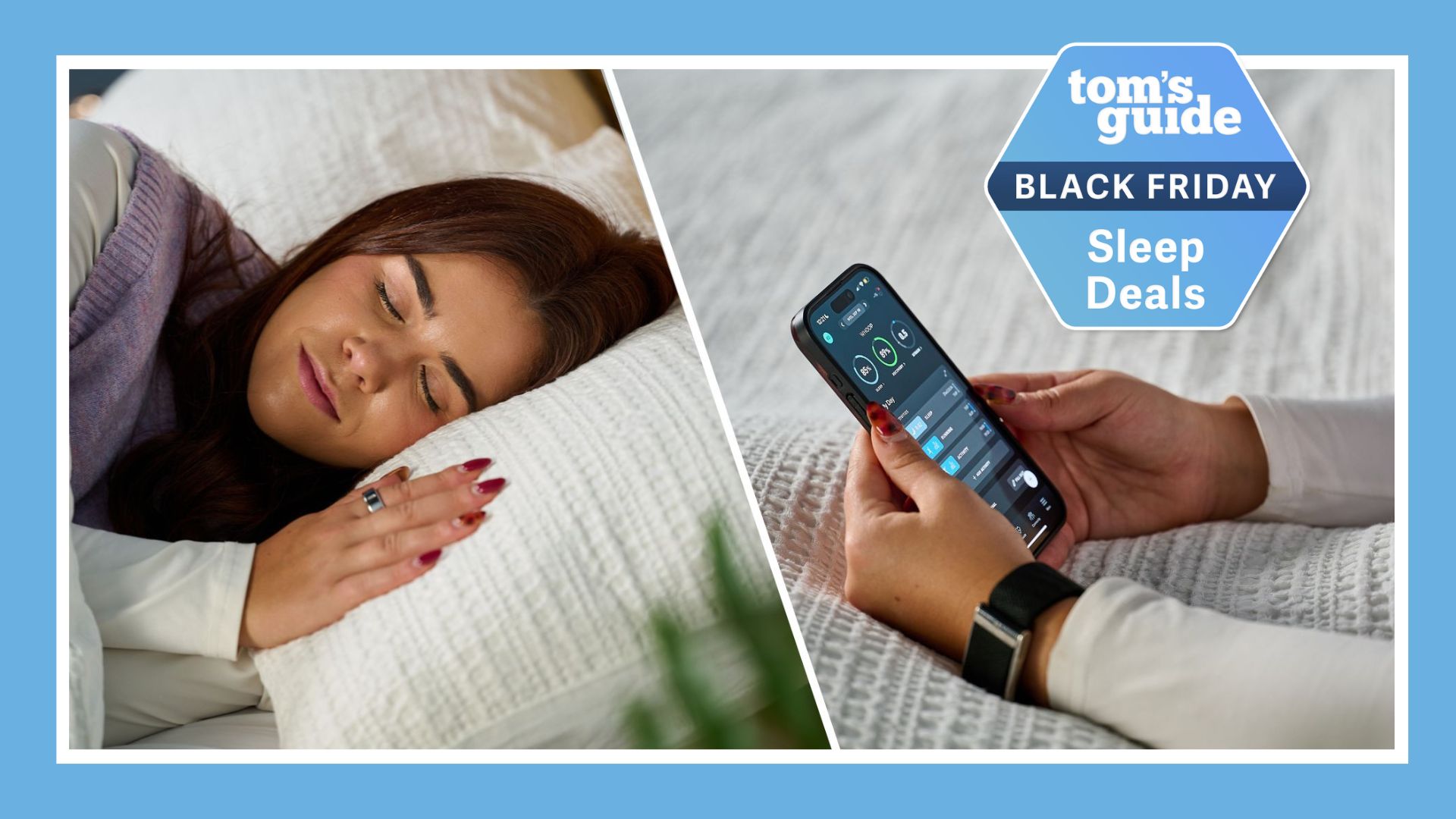I tried out Samsung’s Project Moohan headset — Android XR won me over
Optimized Google apps could be Android XR's big strength
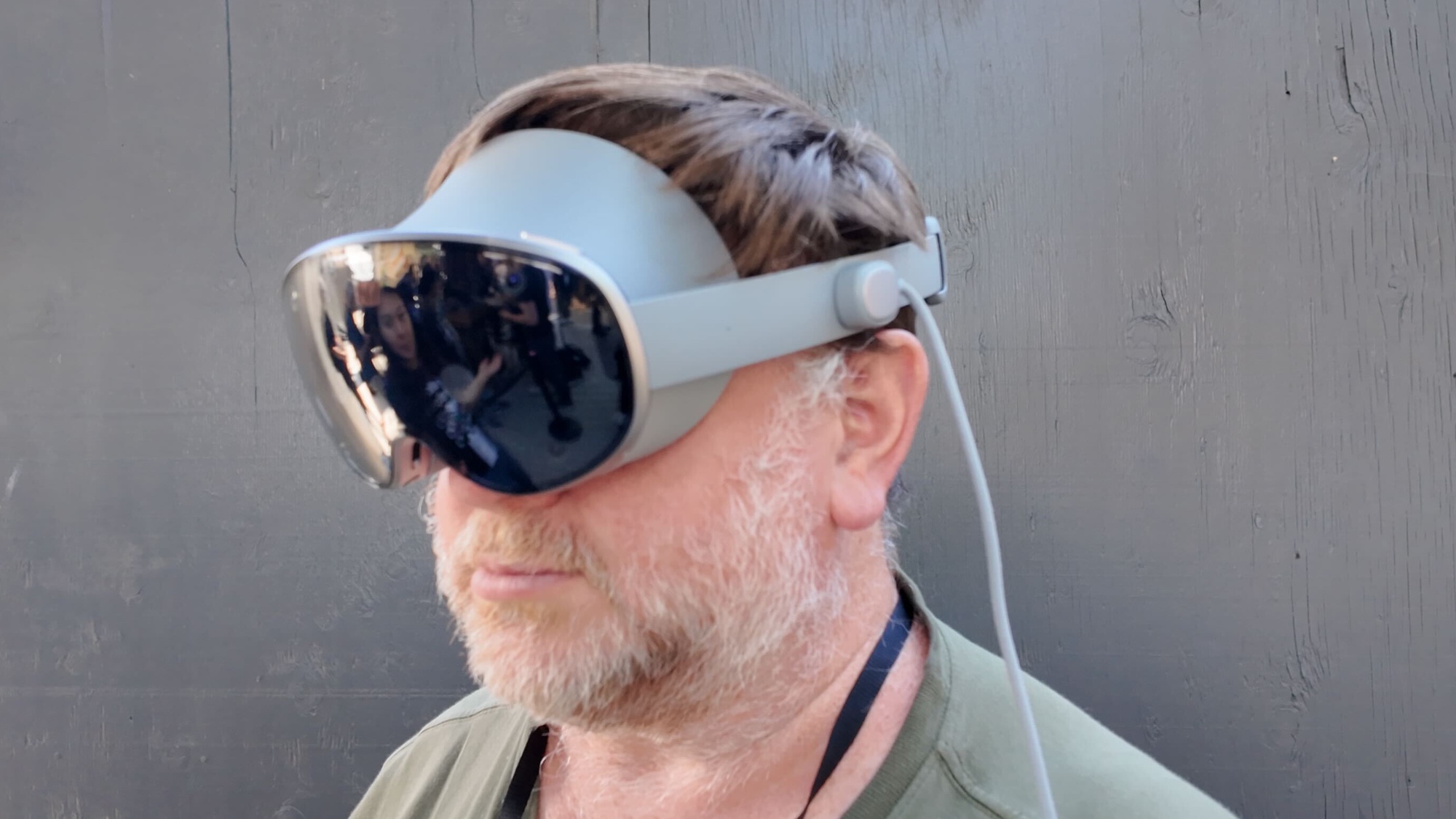
We've heard a lot about Samsung's Project Moohan in the past six months, from Samsung's teaser announcement last December to appearance at everything from Galaxy Unpacked to MWC 2025. But we're still waiting on key details on the virtual reality headset, including its specs and how much it will cost.
After yet another appearance this week at the Google I/O 2025 developer conference, we're just waiting on those details. But having had a chance to wear a Project Moohan headset and even experience running a few apps on the device, I at least have a better sense of what you'll be able to do with Samsung's product once it arrives later this year.
My hands-on time with Project Moohan was less about the headset itself — the Samsung representative walking me through my demo was politely tight-lipped about anything spec-related — and more an introduction to the Android XR platform that the headset is built upon. And from what I saw during that demo, Google apps updated for a virtual environment are very much a critical part of the Android XR experience on Moohan.
Project Moohan recap: What you need to know
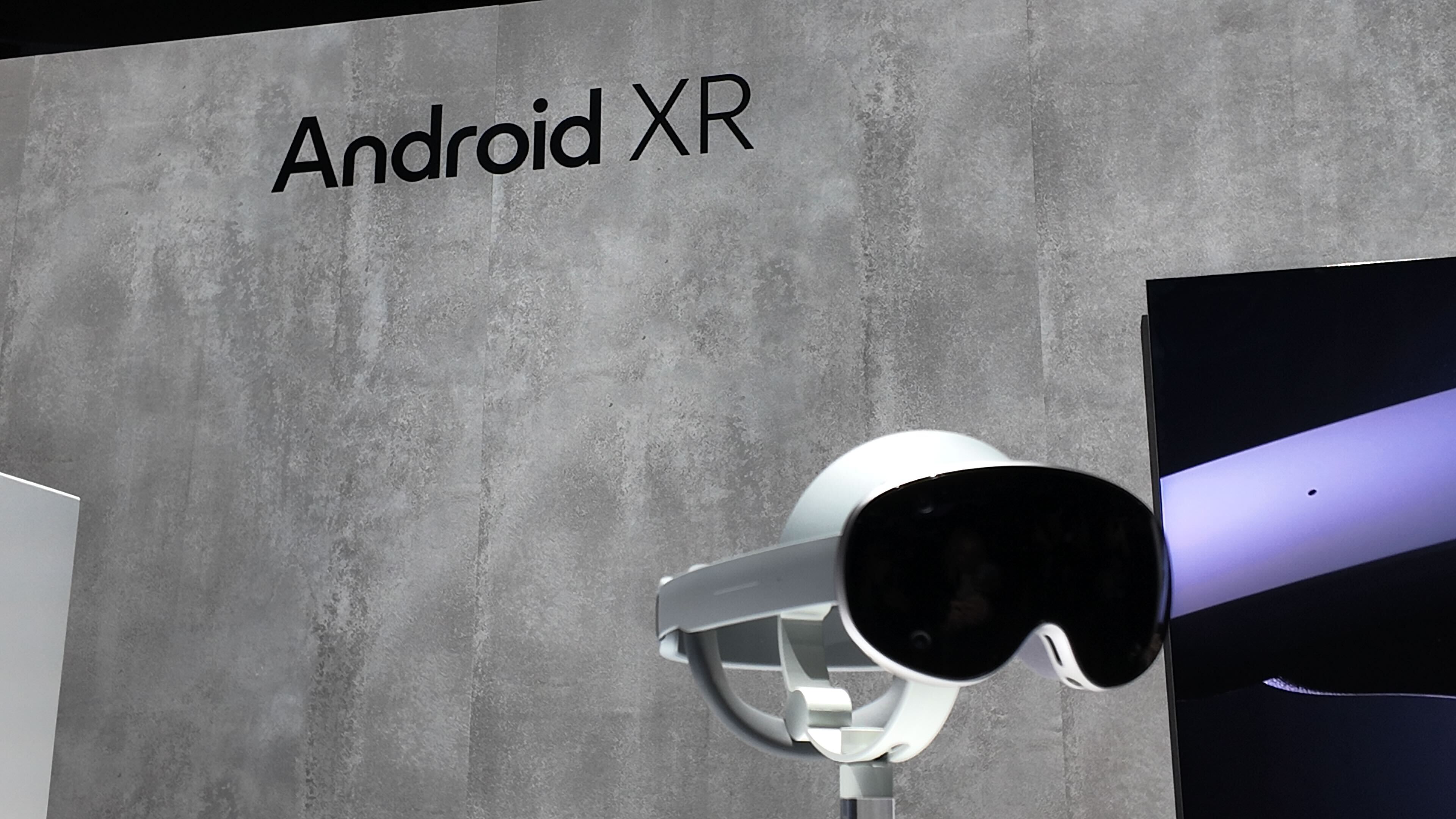
Despite the lack of details on Project Moohan, we do know a little bit about the headset, which is the result of a partnership announced by Samsung, Google and Qualcomm in 2023 to develop an XR product together. According to Qualcomm back when Moohan was announced, the headset features a Snapdragon XR Plus Gen 2 chipset.
That particular silicon offers support for up to 4.3K resolution in each eye, running at 90 frames per second. So it wasn't particularly surprising that graphics and apps looked very sharp when I tried on the headset. The passthrough mode does put an unusual tint around the people you're looking at through the Moohan lenses. I assume that's to add some depth to your view, so you don't feel cut off from the world around you the way you might wearing other headsets.
Indeed, that's been my biggest complaint with any type of mixed reality headgear, but it's not an issue I ran into when trying on the Moohan headset. While Samsung hasn't confirmed the weight of its headset, it didn't feel particularly heavy during my demo — I certainly wasn't looking forward to removing it, as I am most of the time when trying on headsets.
Putting on Moohan is simply a matter of slipping on the headset like a visor and then turning a knob on the back to tighten the fit and hold things in place. You'll definitely feel like you're wearing something over your face, but it's not overly burdensome, at least for the short time that I had it on.
Get instant access to breaking news, the hottest reviews, great deals and helpful tips.
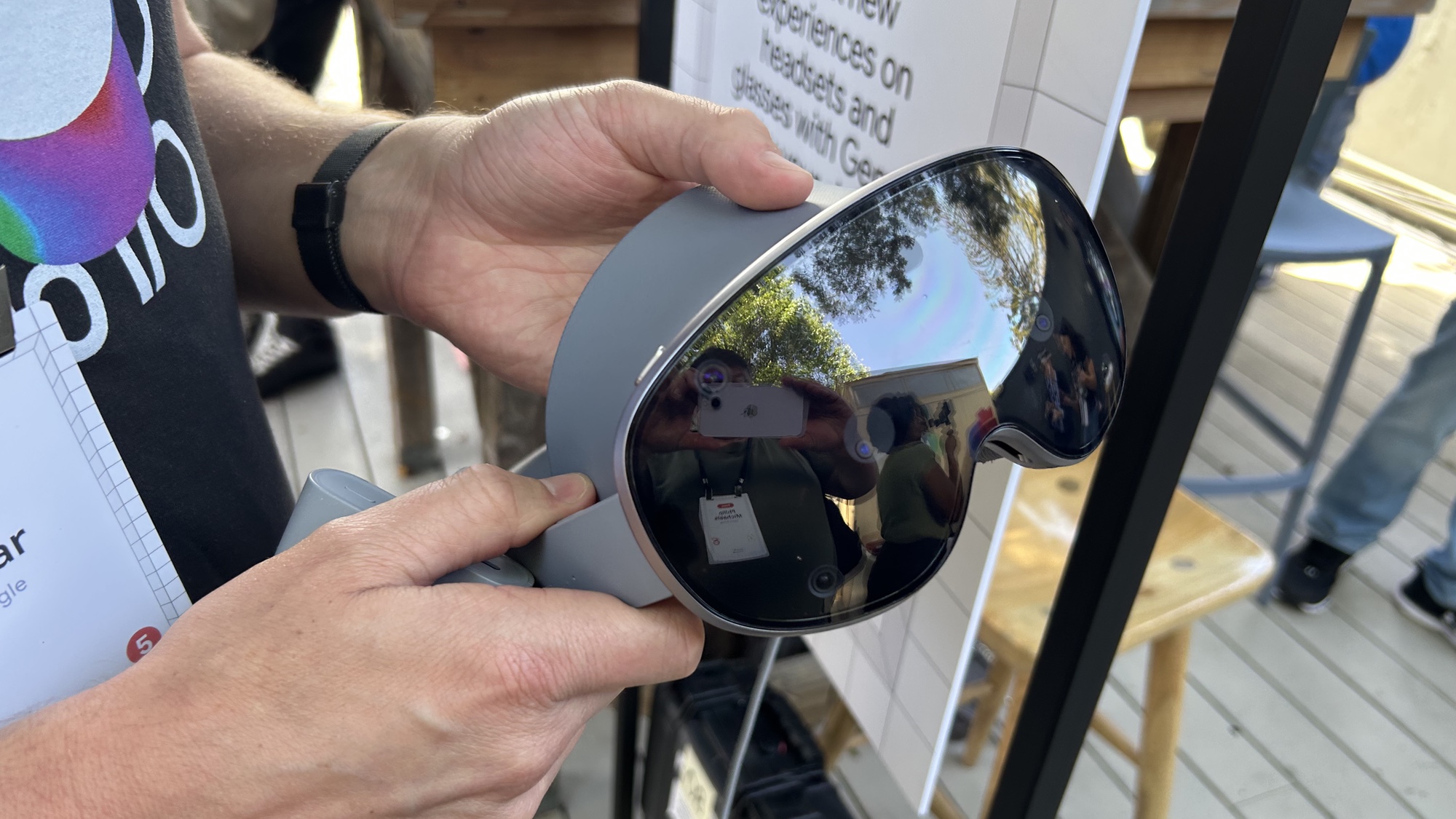
When I tried out Moohan, the headset featured light blockers that enclose the viewing area. But you can take those out to keep things open at the periphery — a way of staying rooted in the real world, the Samsung rep told me. And whether it was the light weight, the passthrough mode or just the overall design of the headset, I never experienced the sensation of disorientation that usually makes headsets a non-starter for me.
You control Moohan with hand gestures: a pinching motion selected things while flipping around your hand and making the same pinching gesture takes you back to the home screen. There may be more gesture-based controls but apart from using my hands to scroll — more on that when we talk about the virtual view in Maps — those were the only controls I really needed on my tour of Moohan.
Using Project Moohan: What it's like
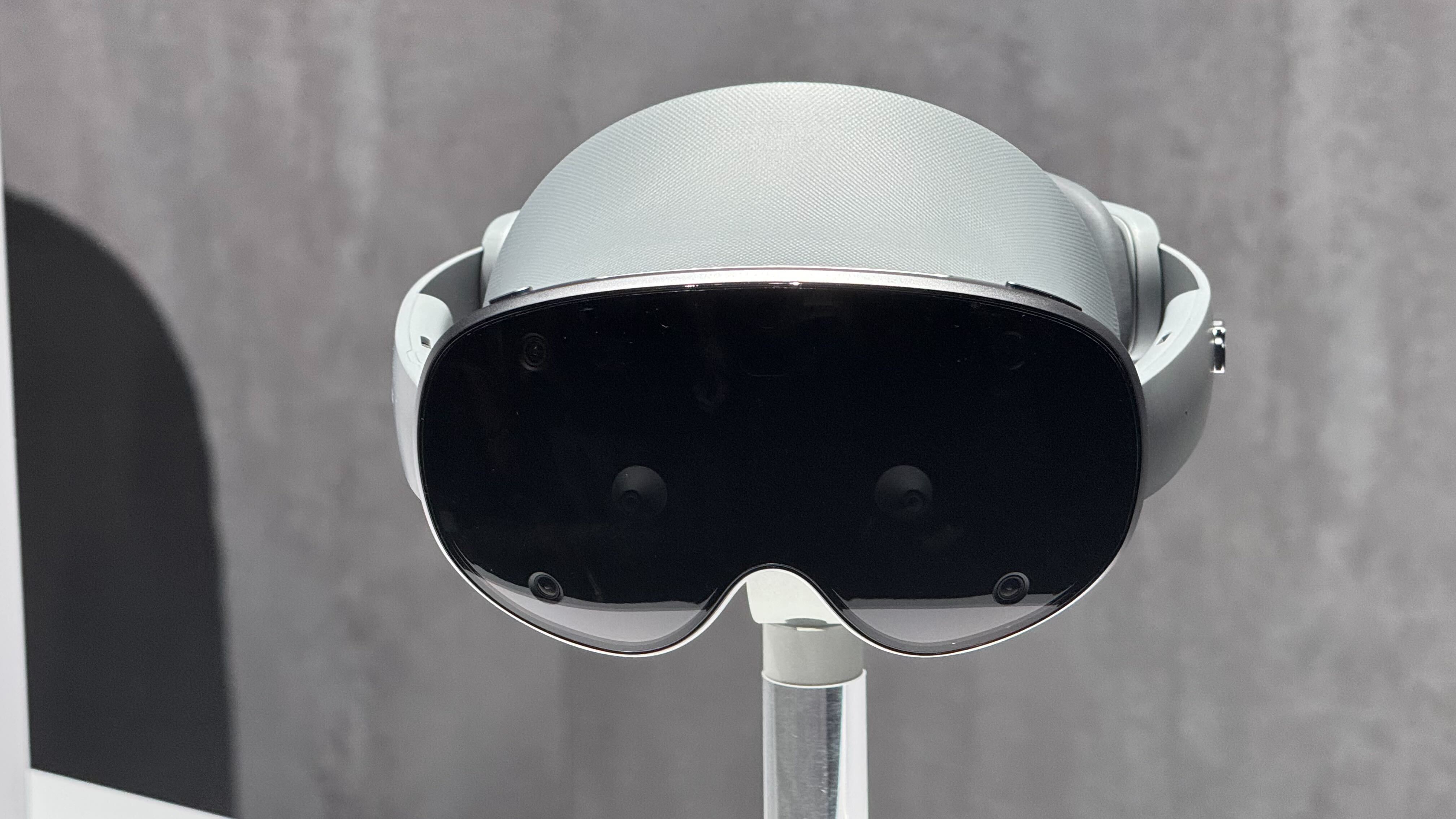
I've never used Apple's Vision Pro, but I imagine the Project Moohan experience is pretty similar. When you go into virtual mode, you've got panels floating before you with different apps and information. The word "Moohan" apparently means "infinity" in Korean, and it seems like Samsung is using that as a guiding principal for its headset. The virtual world offers a seemingly infinite canvas, so why not take advantage of that with the apps running on Android XR?
For the purposes of this demo, Samsung kept the focus on Google-built apps — things like Maps and YouTube that you'd find preinstalled on any Android device. Here, they've been optimized to work on Android XR, though, and the results can be very visually engaging.
In YouTube, for instance, I selected a video highlighting the sights and sounds of Costa Rica, which played before my eyes like any 2D video on any platform. But I also had the option of watching a larger version of the video that took advantage of Moohan's display.
Some YouTube videos could even display in 3D in the headset, adding a sense of depth to the footage. The effect felt a little bit like watching a 3D movie in a cinema, for good and for bad. For example, some motorcycles driving toward me looked three dimensional right up until they reached the camera, nullifying the 3D effect and reminding me that I was ultimately watching a flat image. That's more a limit of 3D video, though, and not really the headset's problem.
In Google's Photos app, you can also view images with depth, wether it was photos of Google and Samsung reps setting up the demo space or a video of a little boy, cuddling his baby brother. The sensation is exactly what I imagine spatial photos and videos to be like on the Vision Pro, which is not to say that they're any less affecting when viewed on another headset like the Moohan.
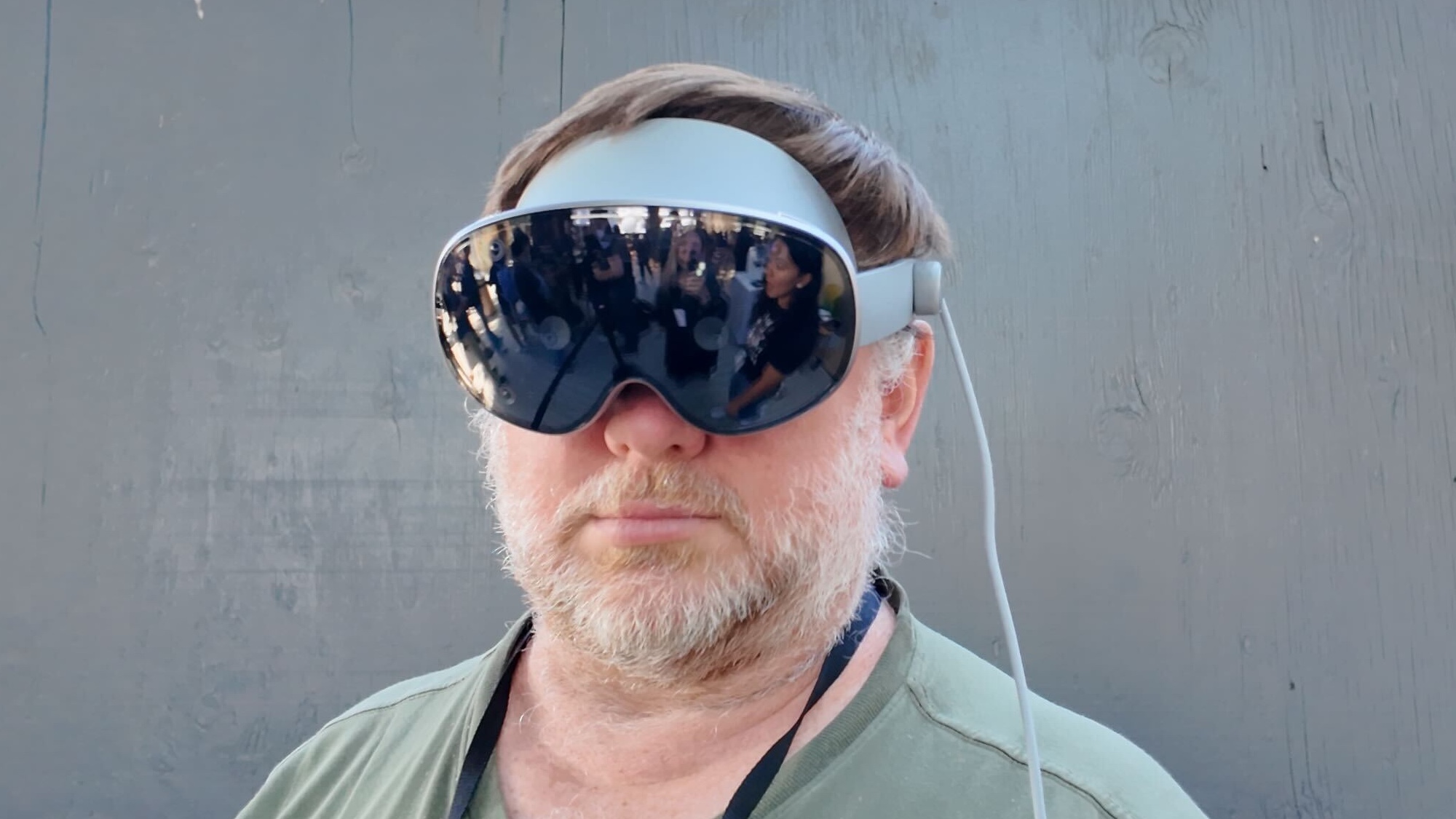
Perhaps my favorite demo featured Google Maps, as I could leap into an immersive view of a map and get a 3D bird's eye view of the area I had been searching for. It took a little to master the controls for scrolling and zooming in on the city scape — you have to use both hands, and I had a hard time controlling the precision of my zoom in the short amount of time I had to experiment with the controls.
Nevertheless, I managed to go from a wide overhead view of Mexico City to a zoomed-in view where I could see the Arena Coliseo close-up. Summoning the Gemini assistant — Google's AI-powered assistant is as present on Moohan as it is on the company's own Android XR-based smart glasses — I could get information on Arena Coleseo, including when upcoming lucha libre matches were being held. Even better, when I asked Gemini to show me videos, we returned to the YouTube app with several lucha libre highlights cued up for my viewing pleasure.
Project Moohan outlook
Project Moohan got a shout-out during the Google I/O keynote, including a reminder that the device will be coming out later this year. And when it does, all those remaining questions about its specs and price should be answered.
The price question seems particularly salient, given how similar the experience of Samsung's headset seems to be with the Vision Pro. Apple's headset costs $3,499, clearly a factor in why sales and interest in the headset have petered out in the year its been available. If Samsung can deliver something that's in the ballpark features-wise but for a fraction of the cost, you may see an uptick in the interest in mixed reality devices like this one and the other Android XR-based offerings on the way.
But that's not really what I came away from my time with Project Moohan thinking about. Rather I was struck by how well the Google apps running on Android XR had been optimized for the virtual space. It's that experience that's ultimately going to determine just how people react to Samsung's upcoming headset.
More from Tom's Guide
- Forget Android XR smart glasses — 3 reasons why I’m more excited about the Project Astra upgrades
- Google's AI-powered Android XR smart glasses could be a game-changer — here's how
- Google and Xreal announce partnership with new Project Aura Android XR smart glasses
Philip Michaels is a Managing Editor at Tom's Guide. He's been covering personal technology since 1999 and was in the building when Steve Jobs showed off the iPhone for the first time. He's been evaluating smartphones since that first iPhone debuted in 2007, and he's been following phone carriers and smartphone plans since 2015. He has strong opinions about Apple, the Oakland Athletics, old movies and proper butchery techniques. Follow him at @PhilipMichaels.
You must confirm your public display name before commenting
Please logout and then login again, you will then be prompted to enter your display name.

